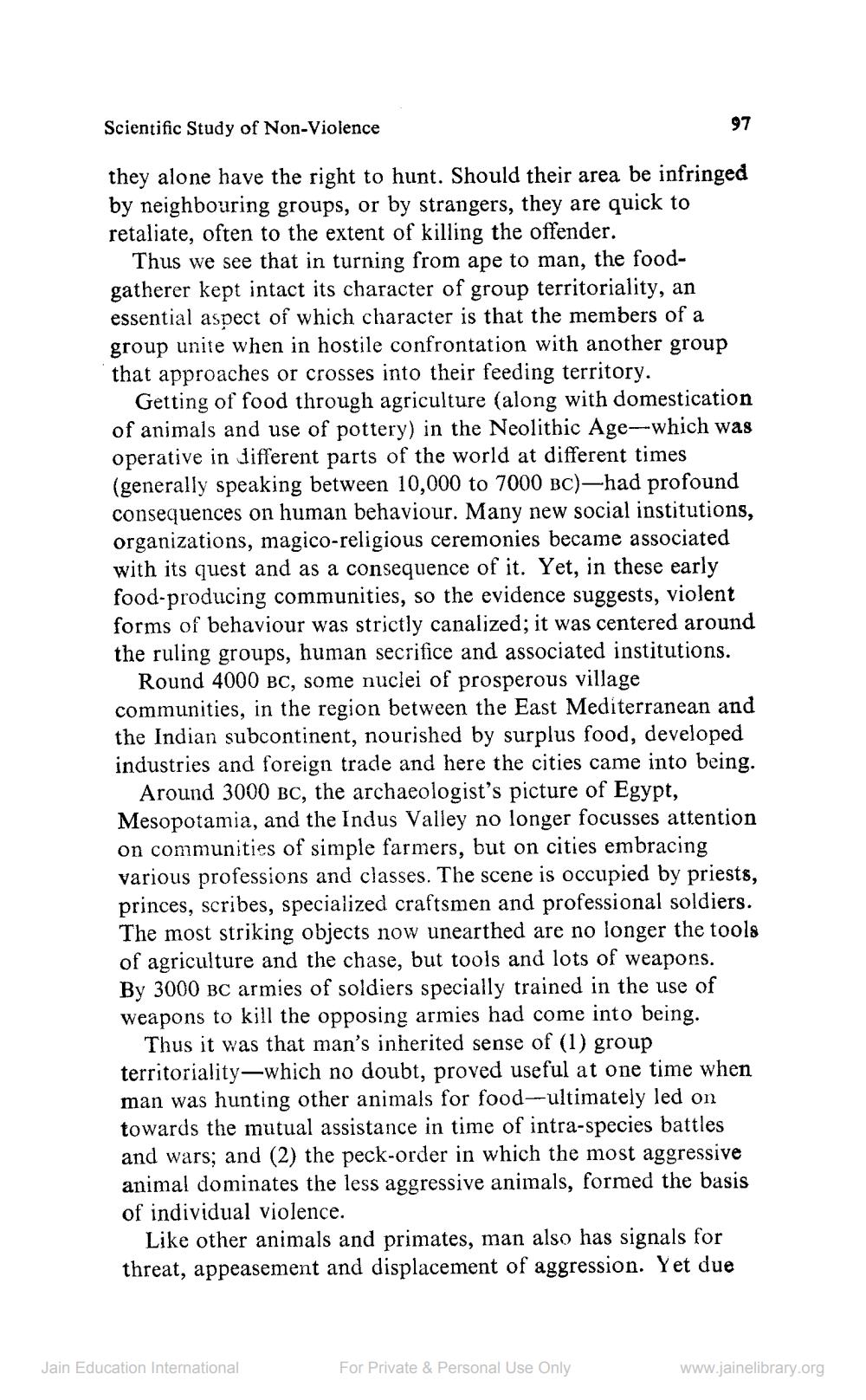________________
Scientific Study of Non-Violence
they alone have the right to hunt. Should their area be infringed by neighbouring groups, or by strangers, they are quick to retaliate, often to the extent of killing the offender.
Thus we see that in turning from ape to man, the foodgatherer kept intact its character of group territoriality, an essential aspect of which character is that the members of a group unite when in hostile confrontation with another group that approaches or crosses into their feeding territory.
Getting of food through agriculture (along with domestication of animals and use of pottery) in the Neolithic Age-which was operative in different parts of the world at different times (generally speaking between 10,000 to 7000 BC)-had profound consequences on human behaviour. Many new social institutions, organizations, magico-religious ceremonies became associated with its quest and as a consequence of it. Yet, in these early food-producing communities, so the evidence suggests, violent forms of behaviour was strictly canalized; it was centered around the ruling groups, human secrifice and associated institutions.
Round 4000 BC, some nuclei of prosperous village communities, in the region between the East Mediterranean and the Indian subcontinent, nourished by surplus food, developed industries and foreign trade and here the cities came into being.
Around 3000 BC, the archaeologist's picture of Egypt, Mesopotamia, and the Indus Valley no longer focusses attention on communities of simple farmers, but on cities embracing various professions and classes. The scene is occupied by priests, princes, scribes, specialized craftsmen and professional soldiers. The most striking objects now unearthed are no longer the tools of agriculture and the chase, but tools and lots of weapons. By 3000 BC armies of soldiers specially trained in the use of weapons to kill the opposing armies had come into being.
Thus it was that man's inherited sense of (1) group territoriality-which no doubt, proved useful at one time when man was hunting other animals for food-ultimately led on towards the mutual assistance in time of intra-species battles and wars; and (2) the peck-order in which the most aggressive animal dominates the less aggressive animals, formed the basis of individual violence.
Like other animals and primates, man also has signals for threat, appeasement and displacement of aggression. Yet due
Jain Education International
For Private & Personal Use Only
www.jainelibrary.org




